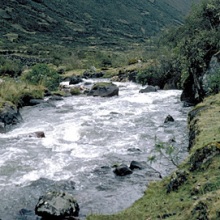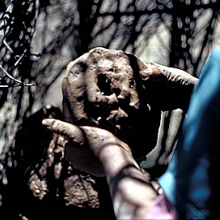learn how
Ancient Techniques - Ceramics - Raw Materials

Where did people find their clay? Most ancient American pottery was made from earthenware clay, a kind of clay that can be found easily near riverbeds and in exposed trenches.
Clay is mainly derived from igneous rock that has become eroded over the ages. Earthenware is classified as secondary or sedimentary clay; it has been carried far from its original bed-rock by natural forces - water or wind. Deposits of earthenware reflect the environment where the clay is found and the degree and kind of erosion it has undergone.

The clay may be fine-grained and therefore useful for moulded pieces requiring fine detail. The clay can be coarse, as a result of being mixed with sand or ground up rocks, making it less likely to crack in a hot fire and therefore useful for cooking utensils. Clay needs to be prepared before use. Often the freshly dug clay is dried, then broken up and left to soak in water. Then it can be sieved to remove unwanted pebbles and other impurities. After the clay is dried again to a malleable consistency, it is kneaded until smooth (see left). Temper or filler is often added to the clay to increase strength and to help ensure a successful firing. There are a variety of tempers available to potters - sand, crushed rock, crushed shells, plant fibres, and even previously made pottery!